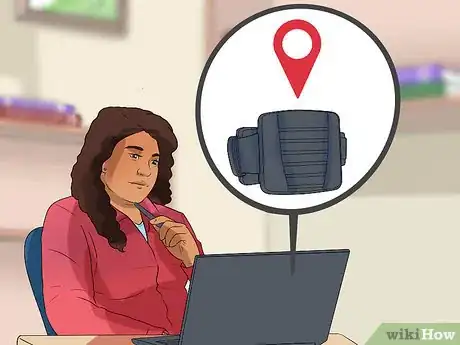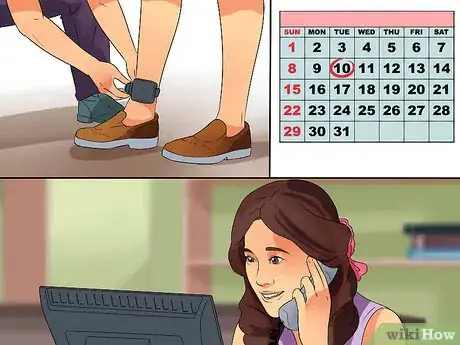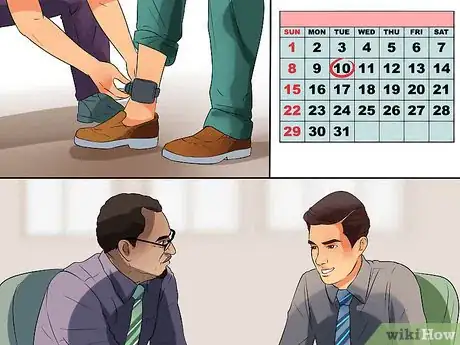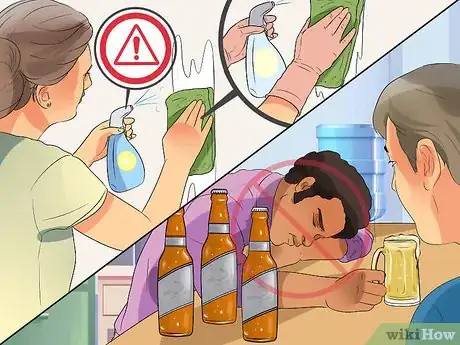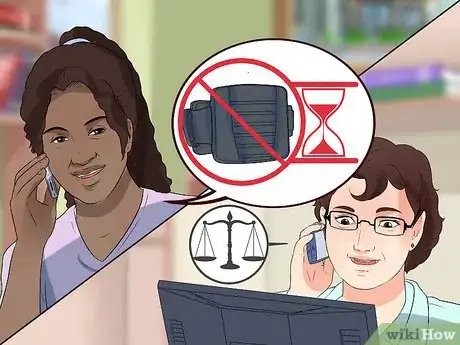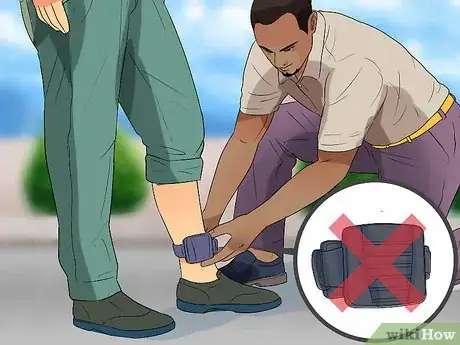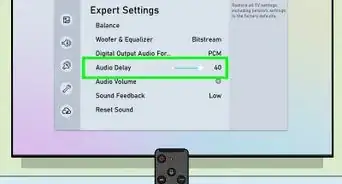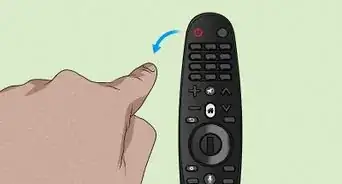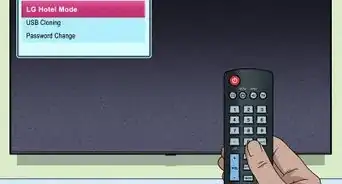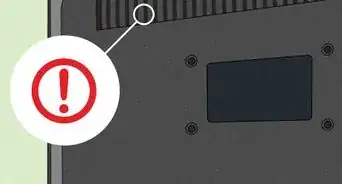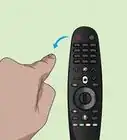This article was written by Jennifer Mueller, JD. Jennifer Mueller is an in-house legal expert at wikiHow. Jennifer reviews, fact-checks, and evaluates wikiHow's legal content to ensure thoroughness and accuracy. She received her JD from Indiana University Maurer School of Law in 2006.
This article has been viewed 29,155 times.
A SCRAM device – the letters stand for "Secure Continuous Remote Alcohol Monitor" – measures the alcohol in your sweat while you're wearing it around your ankle. The court may require you to wear a SCRAM device as a condition of your pretrial release if you have been charged with an alcohol-related offense such as a DUI. You also may be required to wear a SCRAM device as a condition of your probation, after you're released from jail following a conviction for an offense in which alcohol was involved. Following proper SCRAM device procedures is crucial to avoiding an alarm that could result in a return to jail.
Steps
Fitting and Installing
-
1Locate a service provider. The court or your probation officer may set up and manage your SCRAM device using their own staff, or you may have to report to an outside company to get your device installed.[1]
- Refer to the information provided by the court or probation office to determine where you should go and what you should do to get your device installed.
- You may be in charge of finding a service provider near you on your own. If so, check the SCRAM systems website for a list of their locations.
-
2Make your appointment. You'll have to schedule an appointment for your SCRAM device installation, typically within a brief period of time established by the court order governing your release or probation.[2]
- Make sure to leave at least 30-45 minutes for your appointment. In addition to installing your device, the agent will meet with you and discuss the use of the device.
- Review any information you received from the court or probation office regarding the SCRAM device.
- You also may want to make a list of questions to ask the agent regarding the device.
Advertisement -
3Gather your documents. Typically you will need to bring a copy of your court or probation office documents ordering the SCRAM device, as well as a government-issued photo ID. The agent will let you know of any other documents you'll need to bring when you come to your appointment.[3]
- Take a moment to write down any questions or concerns you may have about the SCRAM device so you can talk to the agent about them during your appointment.
- There may be other devices, such as home monitoring devices, that you also must have installed.
- If you have other devices, you also may need to make sure you've met the technological requirements for those devices to be installed.
-
4Attend your appointment. When the date and time comes for your appointment, make sure you arrive at the correct location at least a few minutes early. This isn't a situation where you need to dress to impress. Ideally, you should wear loose-fitting clothing so the SCRAM device can easily be fitted to your ankle.[4]
- When you arrive for your appointment, you'll be introduced to the agent who will explain the procedures to you and set up your SCRAM device.
- This agent is not associated with the court, but you still should be careful not to say anything about your case or anyone involved in your case.
- Typically the agent will go through a brief, prepared statement of information, and may show you a video before answering any questions you have.
- You usually will have to sign a participation agreement before the agent will install the device. This agreement goes through your responsibilities and any costs you may incur.
- Keep in mind that typically you are associated with all costs necessary for monitoring and maintaining your device.
-
5Allow the agent to set up your device. Once you've signed the participation agreement and the basic procedures associated with the SCRAM device have been explained to you, the agent will fit the device on your ankle.[5]
- The first time the device is fitted, don't expect it to be comfortable. The device will be heavy, and will take some getting used to.
- However, the device should not hurt. Walk around the room a little, and let the agent know if the device is pinching or chafing your skin so it can be adjusted before you leave.
- The device should be able to comfortably move around your ankle. If your ankle swells or it otherwise becomes painful, call the agent for an appointment to have it adjusted – do not attempt to adjust it on your own.
- You also should avoid putting anything between your skin and the bracelet. If it irritates your skin, the solution is to have it adjusted, not to put bandages or cloth between the bracelet and your skin.
Succeeding with SCRAM
-
1Go through the products in your home. Before you come home wearing the bracelet, you need to remove or separate everything that contains alcohol so you won't accidentally use it. Even the smallest amount of alcohol can trigger an alarm.
- Pay close attention to personal care products such as shampoo and lotion, as well as cleaning products – they almost all contain alcohol.
- If there are other people living in the home, they can continue to use these products, but you should separate them to make sure you don't accidentally use them.
- Check through drinks and prepared foods as well to make sure no form of alcohol is listed as an ingredient.
-
2Purchase personal care products without alcohol. Many personal care products such as toothpaste, mouthwash, body wash, deodorant, and shampoo contain alcohol. If you use these products, you'll trip an alarm on your SCRAM device.
- Some products, such as mouth wash and antibacterial gel, you should just avoid entirely. Even those that claim to be alcohol-free may still contain trace amounts that could cause an alert from your SCRAM device.
- All-natural or organic products typically are alcohol-free. Check the ingredient list anyway to confirm there are no types of alcohol included, even in trace amounts.
- You also should be careful about over-the-counter cold medicines, many of which contain alcohol.
- You may be able to get a list from the court, your probation officer, or the SCRAM device agent that includes products that are truly alcohol-free and common household and personal care products you should avoid.
-
3Try your best to prevent incidental exposure. In addition to things you ingest or put on your body, there are a number of cleaning products and other things used around your home that may contain alcohol.[6]
- In many cases you wouldn't have to worry about exposure producing a SCRAM alert, but you should at least be aware of products with alcohol in them.
- This doesn't mean you have an excuse not to do any cleaning while you're wearing the SCRAM device.
- But if you're cleaning with products that include alcohol, wear rubber gloves and take care not to get any of the cleaner on or near your skin.
- You do want to avoid being around things, such as newly painted walls, that could emit fumes that include alcohol.
- Avoid being around people cooking in alcohol, or eating any foods that were cooked in alcohol.
-
4Get creative with non-alcoholic alternatives. Natural and organic products can be relatively expensive. If you can't afford them, there are plenty of alcohol-free alternatives you can find that will allow you to maintain your personal care regimen without breaking the bank.
- Particularly if you are going to have to wear the SCRAM device for an extended period of time, you may not be able to afford to switch solely to all those organic and all-natural products.
- Additionally, unless you live in a larger city, you may not have easy access to many of those products. Ordering them online is an alternative, but you'll have to order in advance and pay additional shipping fees.
- However, there are various products that are alcohol-free that you can use instead. For example, coconut oil is inexpensive and freely available, and can replace any moisturizers or lotions you used that previously contained alcohol.
- Olive oil works too, provided you don't mind smelling like a salad.
- Check also for personal care products intended for babies. Baby shampoos and lotions are alcohol-free and will be cheaper than adult alternatives from organic or all-natural companies.
-
5Avoid immersing your device in water. While you can take a shower with the device on, you won't be able to take a bath or go swimming while wearing it. Doing so will set off an alarm that you are attempting to tamper with the device.
- If you decide you want to take a bath, position yourself so that the ankle with the SCRAM device is out of the tub, as though you were wearing a cast. You may need someone's assistance getting into and out of the tub.
- If you are doing intense exercise, you may want to consider covering the device with a sweat band.
- This not only keeps the device dry but also keeps it from moving around on your ankle, which can cause chafing on your skin.
- Avoid putting anything between the SCRAM device and your skin. This will trigger an alert that you're tampering with the device.
-
6Contact your attorney if you need the device removed temporarily. In most circumstances, such as if you're going through security at a courthouse or an airport, there will be no reason to have your SCRAM device removed.
- However, if you are getting an MRI, X-Ray, or CT scan, you won't be able to wear your SCRAM device at all. It will have to be removed the day of the procedure, and then put back on.
- To have the SCRAM device temporarily removed for a medical procedure, you typically must file a motion in court and explain your reasons to the judge.
Motioning for Removal
-
1Consult your attorney. As a criminal defendant, you are entitled to an attorney. If you were ordered to wear the SCRAM device as a condition of pretrial release, your defense attorney may be able to get it removed.[7] [8]
- If you had a public defender and were ordered to wear a SCRAM device as a condition of your probation, that attorney usually will be unable to help you with a post-conviction motion. You'll have to find a private criminal defense attorney.
- While you can file the motion on your own, hiring an attorney probably is in your best interest.
- An experienced criminal defense attorney who is familiar with the judges will know which arguments will work and which won't.
- He or she can help you craft an argument most likely to result in an early removal of your SCRAM device.
-
2Draft your motion. To get your SCRAM device removed early, you must ask the judge for permission to do so and explain your reasons. This is done through a motion. Your attorney will get information from you regarding your life while wearing the SCRAM device, and other evidence that can be used to build your argument.[9] [10]
- Your motion often will include information about your background, particularly if you have no criminal record or problems with alcohol.
- Essentially, the argument is that the SCRAM device is overkill because you don't have problems abusing alcohol.
- The motion also may point out various aspects of your life that are made more difficult as a result of having to wear the SCRAM device.
- If you're on probation, your attorney may want to speak to your probation officer. Your motion is more likely to be approved by the judge if your probation officer supports it.
-
3File your motion with the court. Once your motion is complete, it must be filed with the clerk of the court that originally ordered you to wear the SCRAM device. Typically, your attorney will take care of the filing process for you.[11] [12]
- The court will charge a filing fee, typically around $100 or less. If you have an attorney, they typically will pay this fee and add it to your court costs for the proceeding.
- When your motion is filed, the clerk will set a date for the court hearing on the motion. Make sure you're available to attend this hearing, as your attorney probably will want you to testify.
- The filed motion also must be served on the prosecutor in your case. If you are on probation, the motion typically must be served on your probation officer.
- In some jurisdictions, you may have to serve the alleged victim in situations where you were charged or convicted of domestic violence.
-
4Attend the hearing on your motion. The judge will hold a hearing to decide whether to grant your motion and remove the SCRAM device early. In addition to hearing your arguments, the judge also will hear from any parties, such as the prosecuting attorney, who oppose early removal of your SCRAM device.[13] [14]
- The judge will be more likely to grant your motion if you have no prior record, and haven't had any prior issues involving alcohol.
- You also tend to have a stronger case if you've been wearing the SCRAM device for awhile and there have been no alarms, including false positives.
- This indicates that you've been following the rules. A lack of problems in your past tends to show that you will continue to follow the rules.
- The judge will hear from prosecutors, or your probation officer, to find out whether they oppose your motion.
- Keep in mind that if your motion faces strong opposition, the judge isn't likely to grant it.
-
5Have the device removed. If the judge grants your motion, you typically must make an appointment with the service provider who set up your SCRAM device to have it officially deactivated and removed by an agent.[15] [16]
- When you arrive at your appointment to remove the device, you must bring government-issued photo ID as well as the judge's order granting your motion.
- After the device is removed, you still should avoid drinking alcohol or appearing in places such as bars that serve alcohol.
- If the judge denies your motion, there's not much you can do. Motions typically cannot be appealed.
- However, if you're on probation, you may be able to file another motion later on. Provided you continue to follow the terms and conditions of your probation, the judge may agree to remove the SCRAM device later.
References
- ↑ https://www.scramsystems.com/clients/
- ↑ https://www.scramsystems.com/clients/
- ↑ https://www.scramsystems.com/clients/
- ↑ https://www.scramsystems.com/clients/
- ↑ https://www.scramsystems.com/clients/
- ↑ http://www.bot.ca.gov/licensees/alcoholfree_guide.pdf
- ↑ https://www.avvo.com/legal-guides/ugc/how-to-get-your-release-conditions-changed-after-an-arrest-and-booking
- ↑ http://www.wearethehope.org/pdf/How%20To%20File%20A%20Motion%20to%20Modify%20Probation.pdf
- ↑ https://www.avvo.com/legal-guides/ugc/how-to-get-your-release-conditions-changed-after-an-arrest-and-booking
- ↑ http://www.wearethehope.org/pdf/How%20To%20File%20A%20Motion%20to%20Modify%20Probation.pdf
- ↑ https://www.avvo.com/legal-guides/ugc/how-to-get-your-release-conditions-changed-after-an-arrest-and-booking
- ↑ http://www.wearethehope.org/pdf/How%20To%20File%20A%20Motion%20to%20Modify%20Probation.pdf
- ↑ https://www.avvo.com/legal-guides/ugc/how-to-get-your-release-conditions-changed-after-an-arrest-and-booking
- ↑ http://www.wearethehope.org/pdf/How%20To%20File%20A%20Motion%20to%20Modify%20Probation.pdf
- ↑ https://www.avvo.com/legal-guides/ugc/how-to-get-your-release-conditions-changed-after-an-arrest-and-booking
- ↑ http://www.wearethehope.org/pdf/How%20To%20File%20A%20Motion%20to%20Modify%20Probation.pdf
